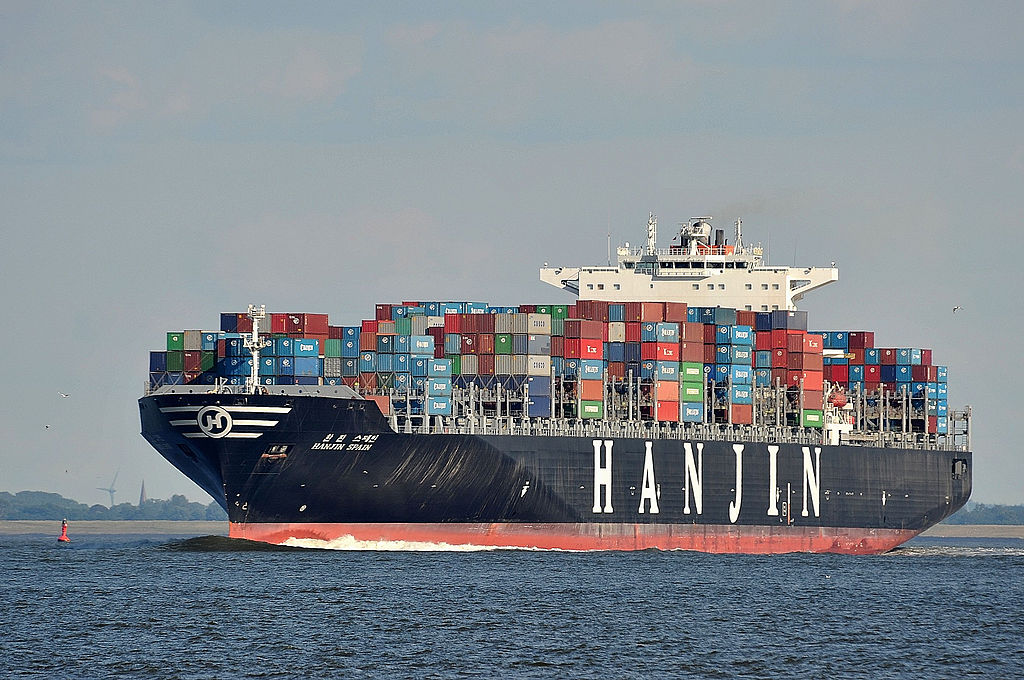Spain’s exporting prowess continued in 2017 when sales of goods abroad increased for the eighth straight year and notched up a new record of €277.1 billion, close to one-quarter of GDP (see Figure 1).
Figure 1. Merchandise exports’ value, as a percentage of GDP and coverage, 2007-17 (€ billion and %)
| Exports (€ bn) | % of GDP | Coverage (%) (1) | |
|---|---|---|---|
| 2007 | 185.0 | 17.6 | 64.7 |
| 2008 | 189.2 | 17.3 | 66.8 |
| 2009 | 159.9 | 15.2 | 77.6 |
| 2010 | 186.8 | 17.7 | 77.8 |
| 2011 | 215.2 | 20.2 | 81.8 |
| 2012 | 226.1 | 21.5 | 87.7 |
| 2013 | 235.8 | 22.8 | 93.4 |
| 2014 | 240.6 | 22.9 | 90.6 |
| 2015 | 249.8 | 23.3 | 90.9 |
| 2016 | 256.5 | 22.8 | 93.6 |
| 2017 | 277.1 | 23.8 | 91.6 |
(1) Exports as a percentage of imports.
Source: Ministry of Economy and Competitiveness.
Exporting was a path to survival for many companies after the country went into a prolonged recession following the bursting of a massive property bubble in 2008 and the global financial crisis. Faced with plummeting demand from consumers, companies and the government, some companies, particularly small and medium-sized ones, had no alternative but to seek out markets abroad or face going to the wall. For those that have been successful, exporting has become a way of life even though the domestic market has picked up. The €88 billion rise in exports since 2008 is a striking achievement.
The total number of exporters rose from 137,528 in 2012 to 161,454 in 2017, and regular ones (more than four years continuously) from 38,373 to 50,562 (see Figure 2). Growth in regular exporters (+24.1%) was almost three times more than that in total exporters (+9.2%). This a significant structural improvement, particularly given the fixed costs companies incur when they enter foreign markets, and is a hopeful sign that Spain will keep on improving its export performance, although there is always the temptation to stop when the domestic market is booming again.
Figure 2. Total and regular exporters, 2012-17
| 2012 | 2013 | 2014 | 2015 | 2016 | 2017 | |
|---|---|---|---|---|---|---|
| Total | 137,528 | 151,160 | 147,845 | 147,334 | 148,558 | 151,454 |
| Regular | 38,373 | 41,168 | 45,842 | 47,768 | 49,767 | 50,562 |
Source: ICEX.
More broadly, external demand has been largely responsible for Spain’s recovery, which gathered pace in the last two years (GDP growth of 3% a year) and indicated an increasingly competitive and internationalised economy. Thanks to the export boom, the trade deficit shrank from €94.1 billion in 2008 to €24.7 billion last year. The deficit, however, was 32% higher than in 2016, reflecting the upturn in domestic demand and companies’ need to import components in order to increase their exports.
Exports covered 91.8% of imports in 2017 (only 66.8% in 2008). This, coupled with record tourism (82 million visitors last year), helped Spain move from a current account deficit that reached a nerve-wracking 9.3% of GDP in 2008 to a small surplus in the last five years.
Spain’s global market share of exports (latest figures 2016) has increased since 2015 and could have risen again in 2017 (see Figure 3).
Figure 3. Ranking by global market share of merchandise exports (%), 2012-16
| Ranking (1) | 2012 | 2014 | 2015 | 2016 |
|---|---|---|---|---|
| 1. China | 11.2 | 12.3 | 13.8 | 13.2 |
| 2. US | 8.4 | 8.5 | 9.1 | 9.1 |
| 3. Germany | 8.3 | 7.9 | 8.1 | 8.4 |
| 7. France | 3.1 | 3.1 | 3.1 | 3.1 |
| 9. Italy | 2.7 | 2.8 | 2.8 | 2.9 |
| 10. UK | 2.6 | 2.7 | 2.8 | 2.6 |
| 16. Spain | 1.6 | 1.7 | 1.7 | 1.8 |
(1) Ranked by position in 2016.
Source: World Trade Organisation.
The largest contribution to the growth in exports came from energy products (2.5 pp), capital goods (1.9 pp), chemical products (1.1 pp) and food, drinks and tobacco (1.1 pp). The leading export sectors were capital goods (20.3% of the total and up 9.2%), food, drinks and tobacco (16.5% and 6.3%, respectively) and the motor industry (16.3% and 0.1%).
The increased geographical diversification of exports has helped to boost sales abroad. Exports to the EU (65.7% of the total) rose 8%, mainly because of those to France, but those to relatively new markets such as China and Turkey also grew significantly (+24.4% and +10.6%, respectively) though from a smaller base.
A very small number of exporters still account for a big share of exports (see Figure 4). The 10 largest exporters accounted for 15.5% of total exports last year, albeit a slightly lower share than in 2016 (15.8%).
Figure 4. Percentage share of the value of Spain’s exports by main exporters
| Main exporters | % of total exports | |
|---|---|---|
| 2010 | 2017 | |
| Top 10 | 14.9 | 15.5 |
| Top 25 | 22.7 | 24.5 |
| Top 100 | 38.0 | 38.9 |
| Top 500 | 57.3 | 58.6 |
| Top 1,0000 | 66.6 | 67.5 |
| Top 5,000 | 87.8 | 87.8 |
Source: ICEX with customs data.
The export concentration is due to the high atomisation in Spanish companies: their average size is a fraction compared to that of many other developed economies. This limits export capacity as it is widely accepted that firm size is the largest single determinant for companies to start exporting. Larger firms tend to have higher productivity growth, so their unit labour costs typically rise less than for smaller and less productive firms.
In an otherwise bright picture, exports to the UK, which leaves the EU in 2019, were down 1.1% at €18.9 billion and imports from there were up 2.3% at €11.4 billion. With two-way trade at €30 billion, both countries have a vested interest in achieving a post-Brexit trade deal that maintains as far as possible their respective market positions.
With this in mind, UK Chancellor Philip Hammond included Madrid in a visit to EU capitals this month in a Brexit charm offensive. Whether Spain’s exports to the UK are hit by the new trade arrangements after Brexit remains to be seen. Whatever happens, Spain needs to keep up the export pace.



